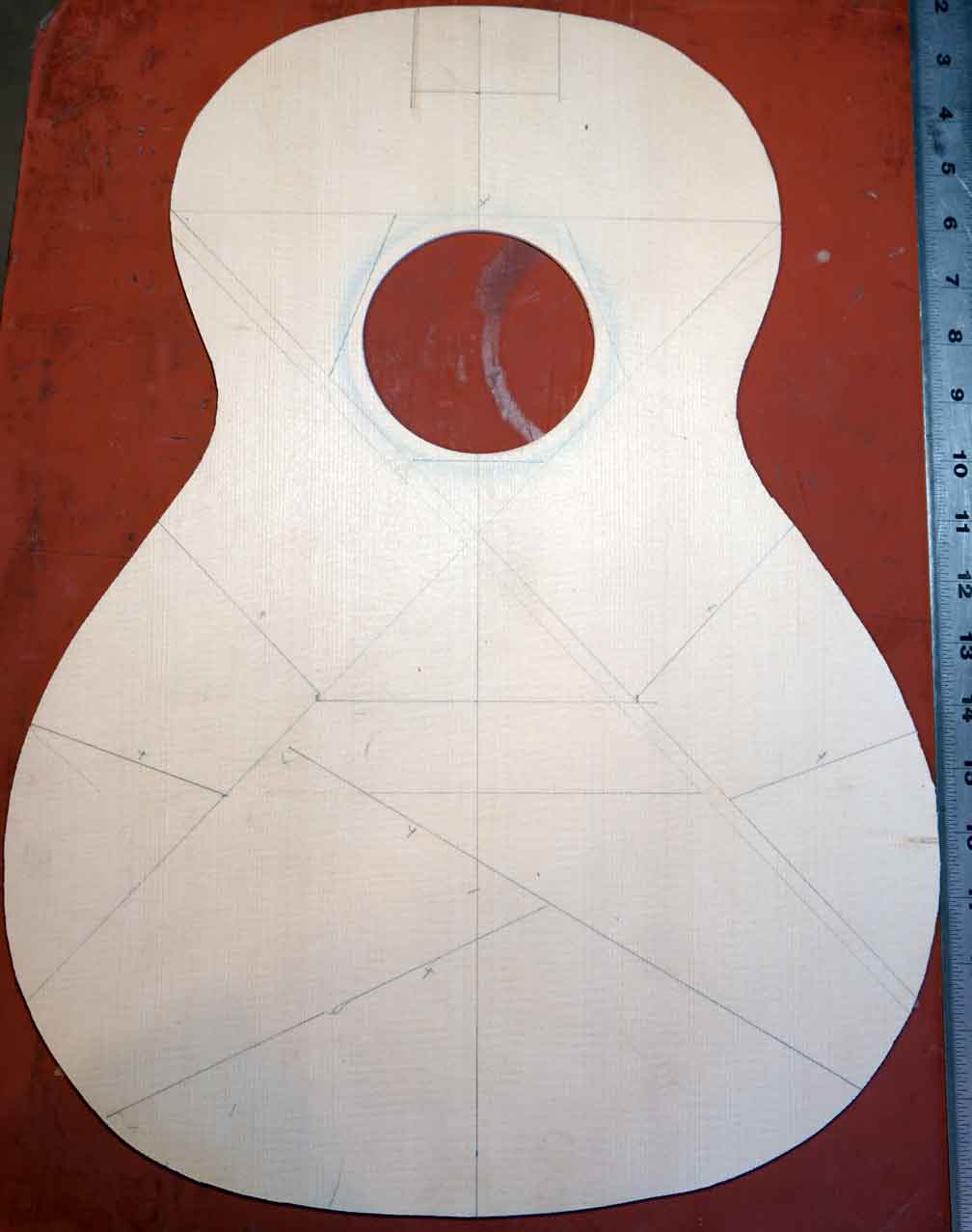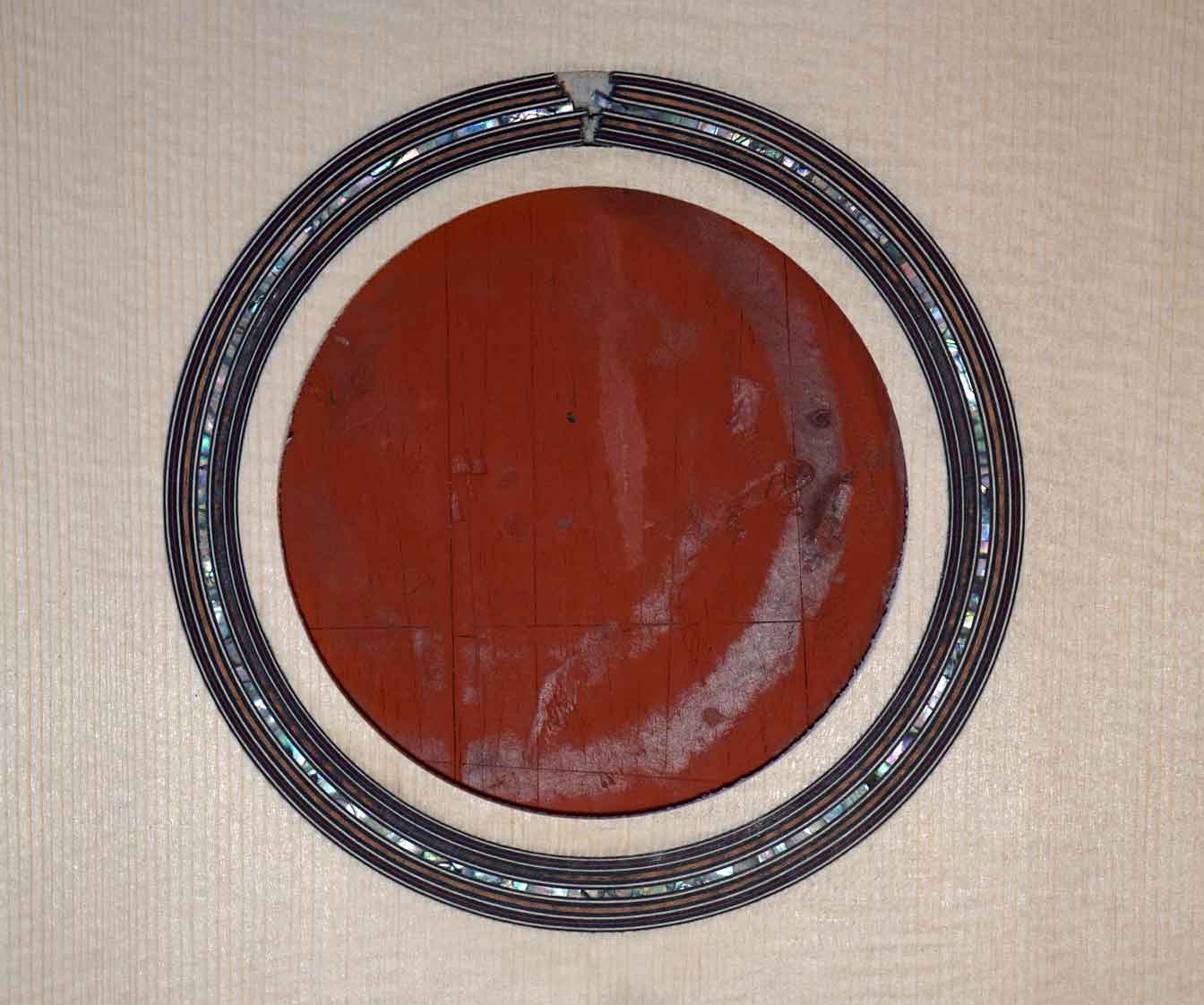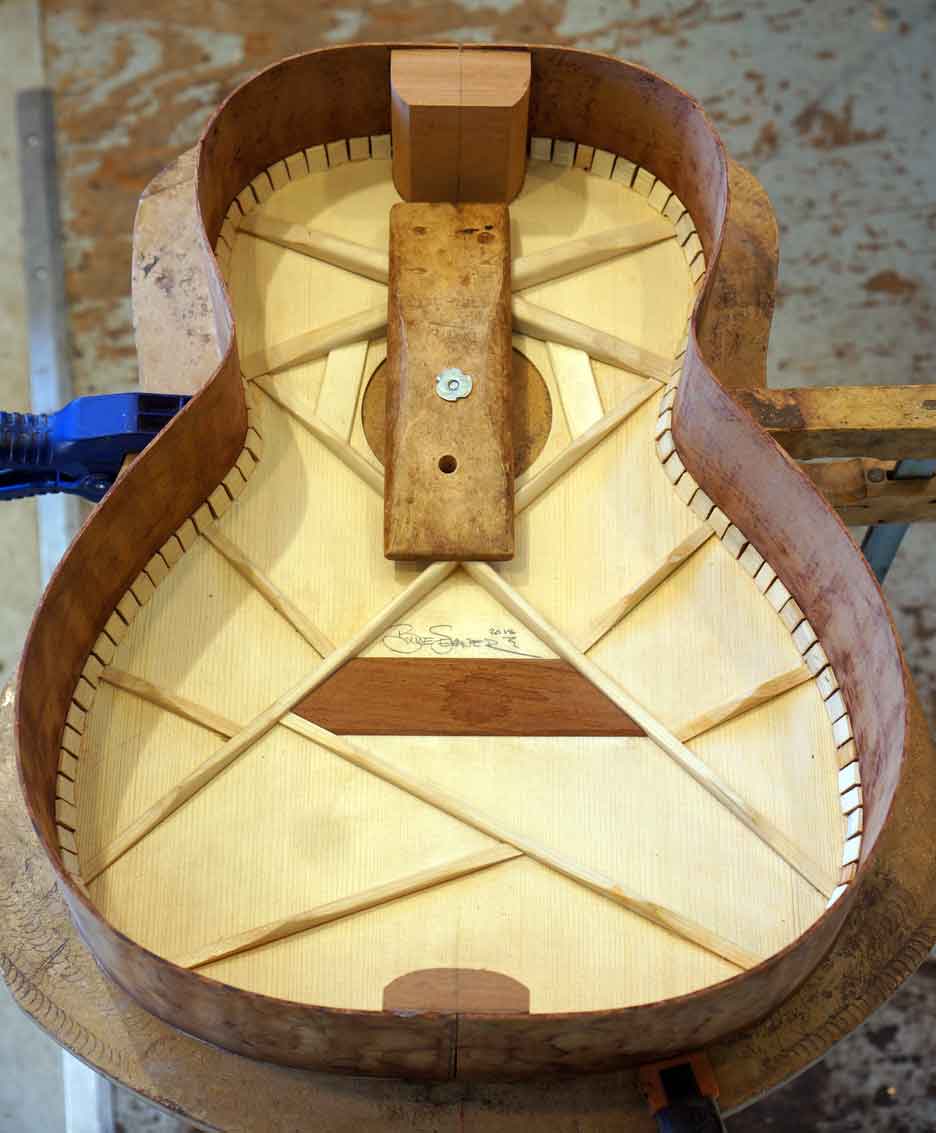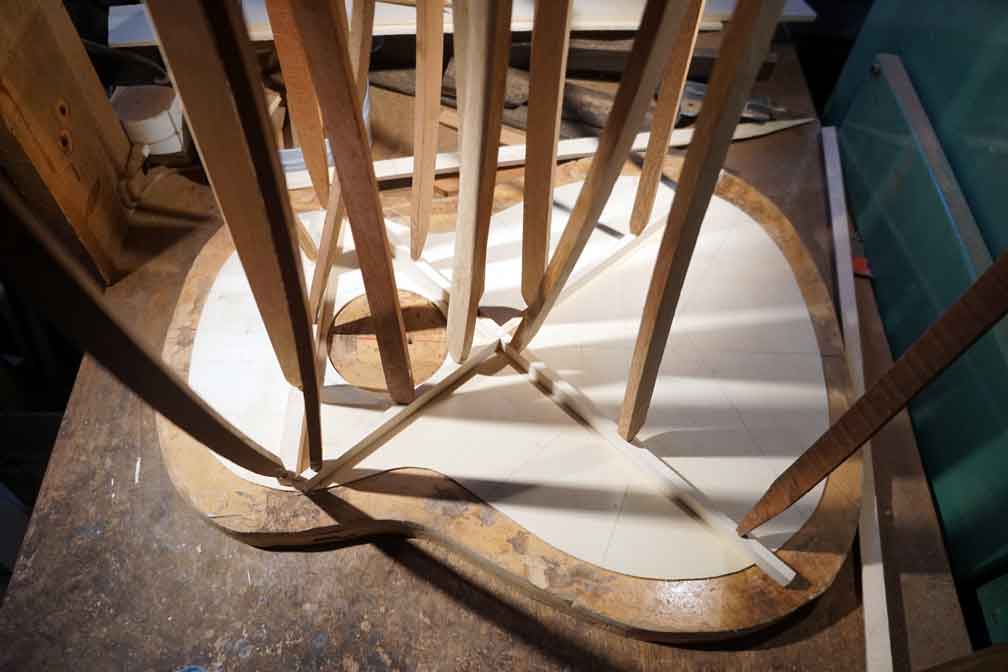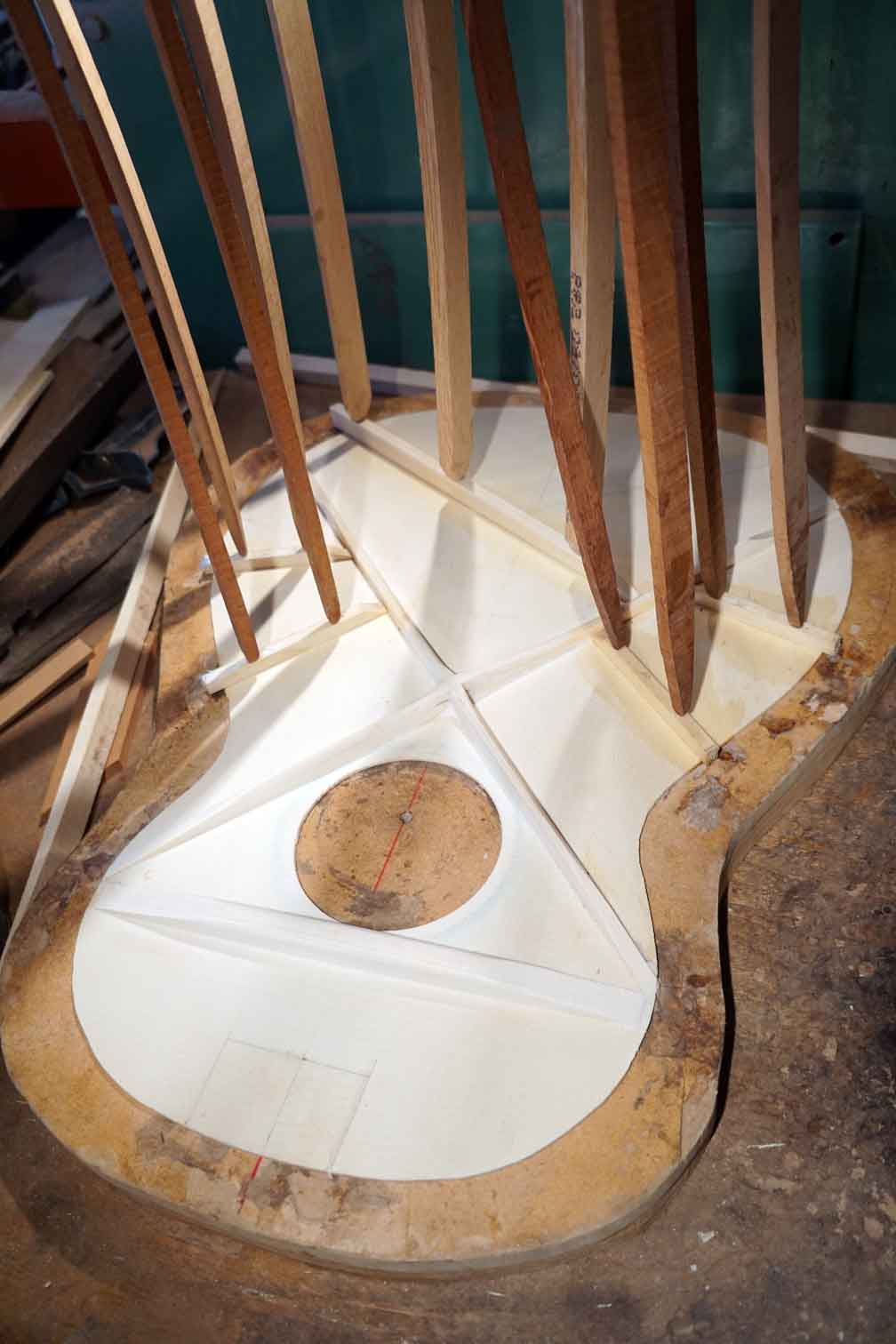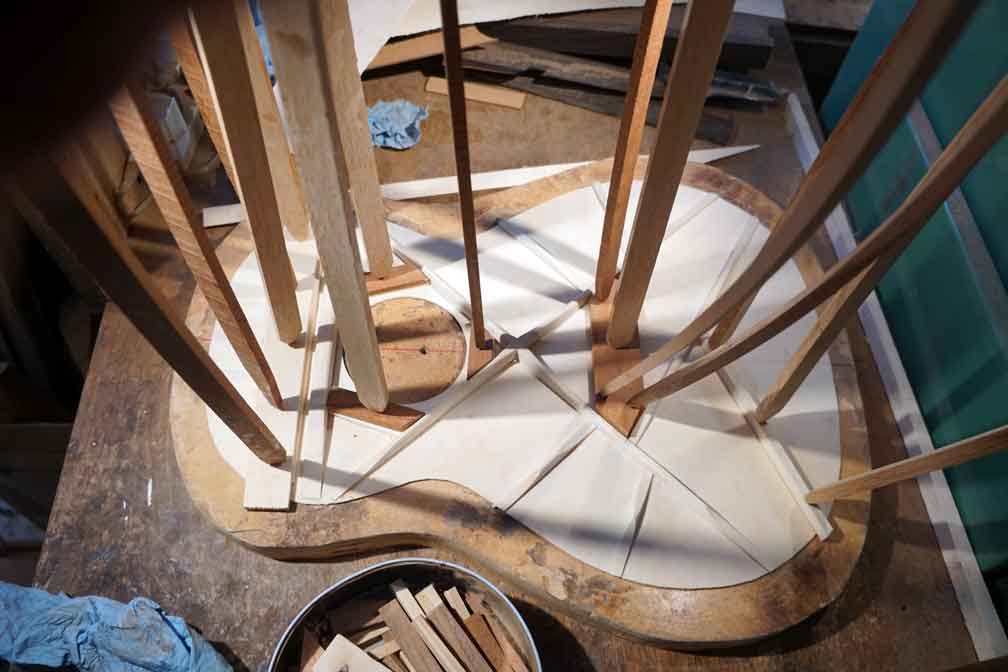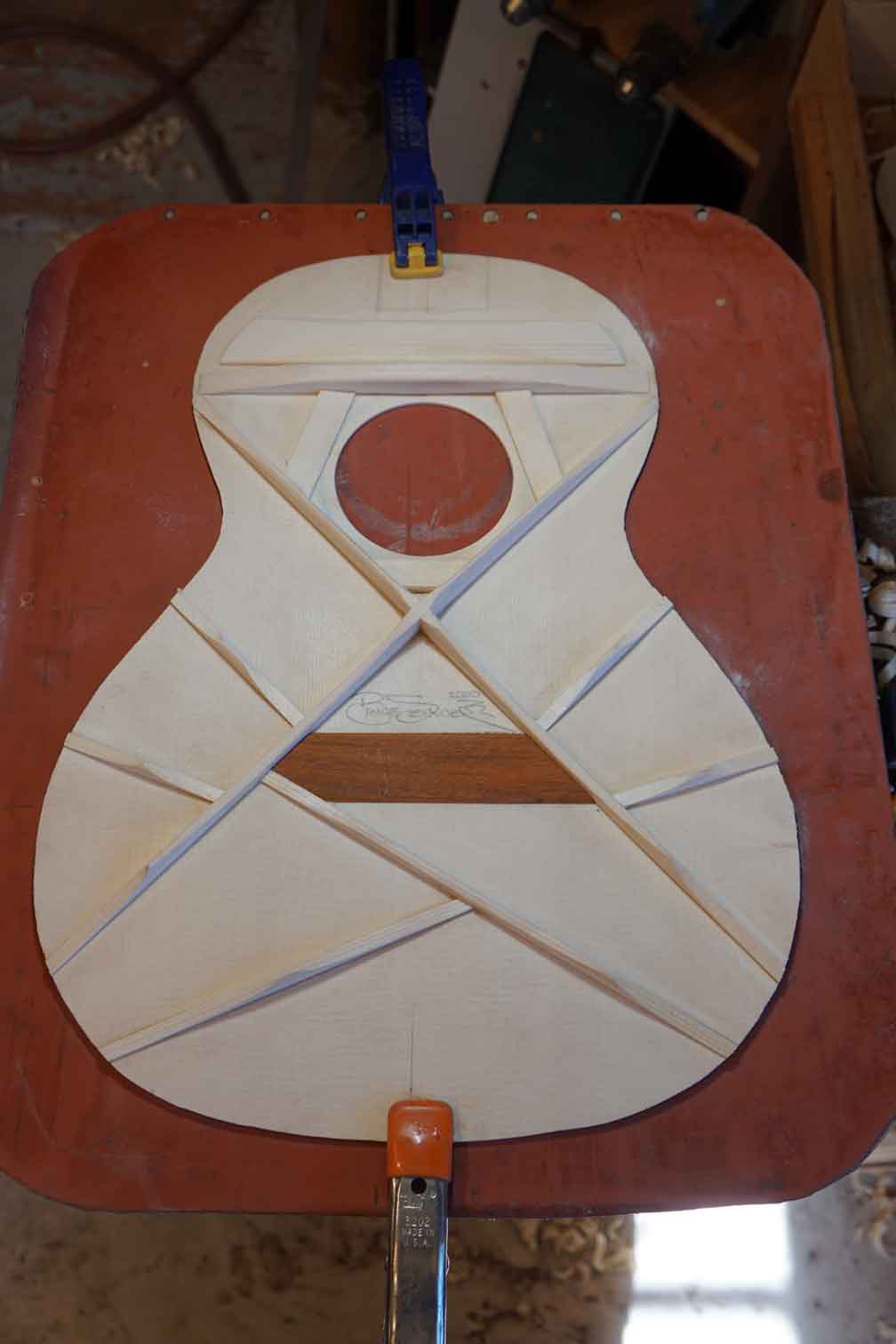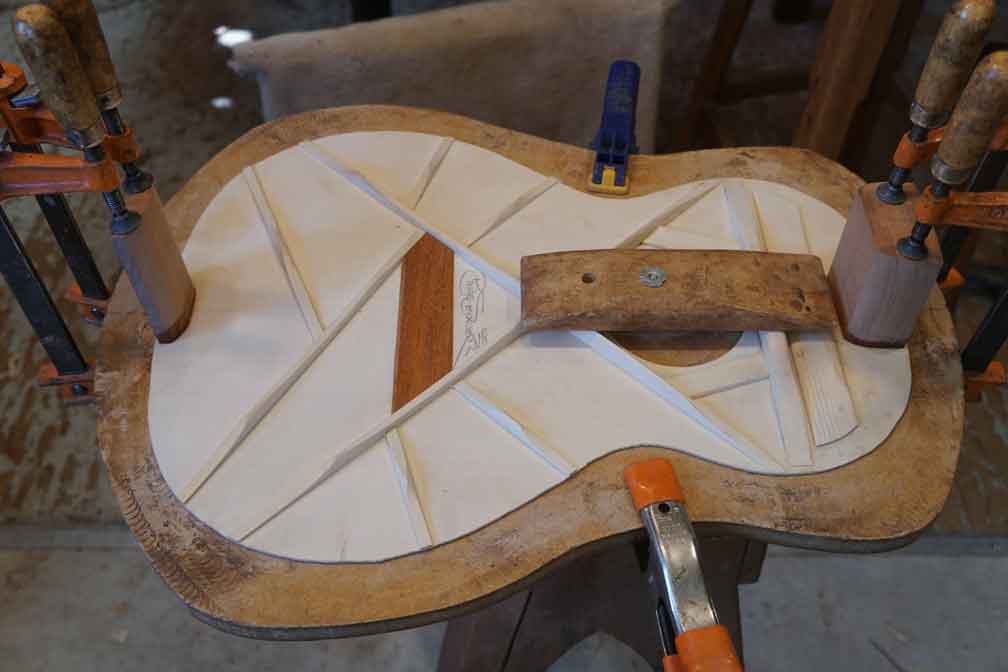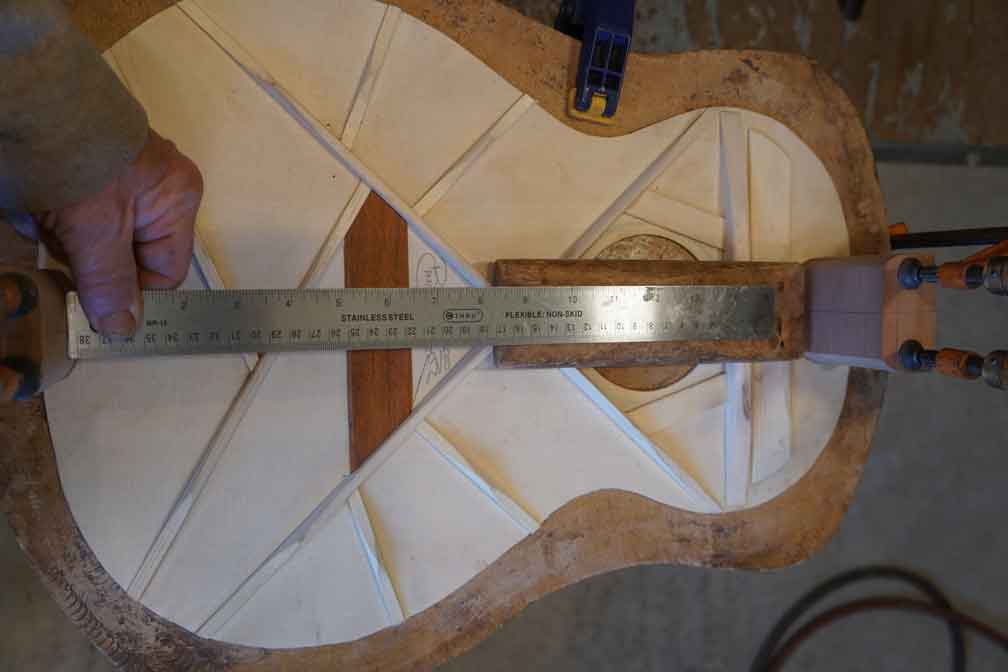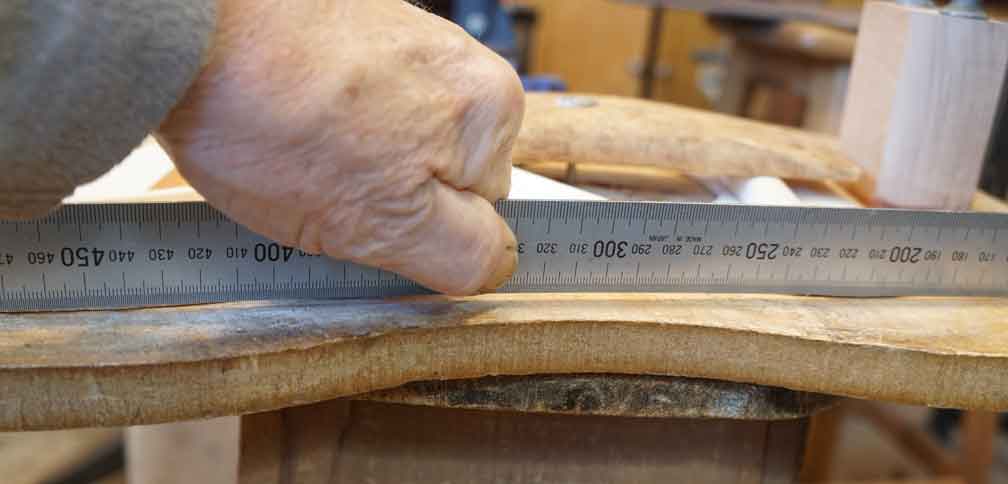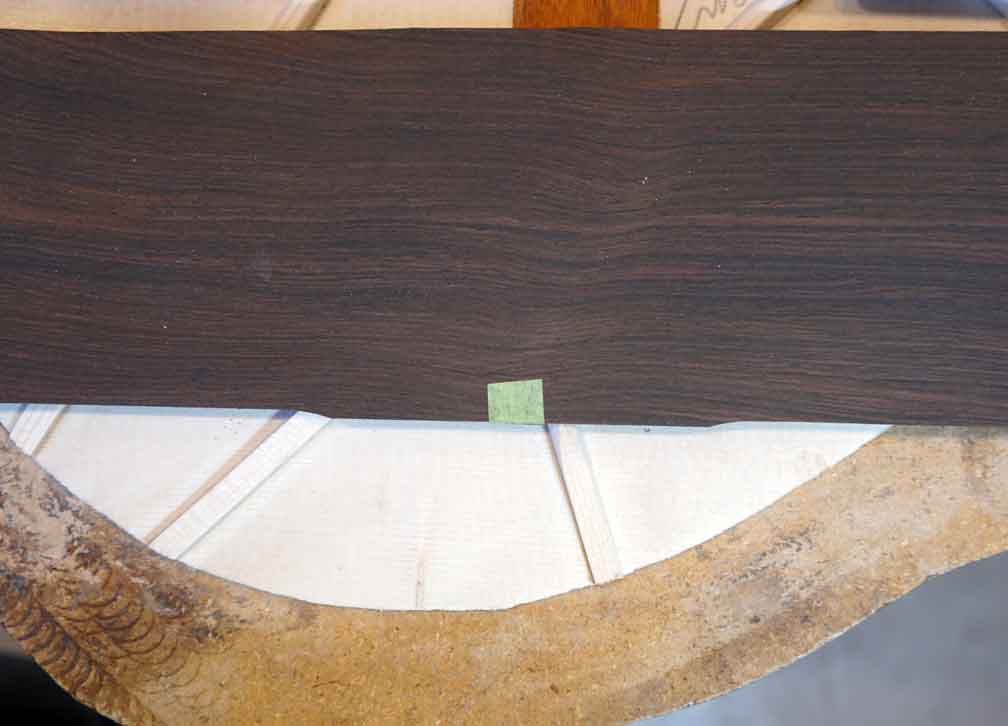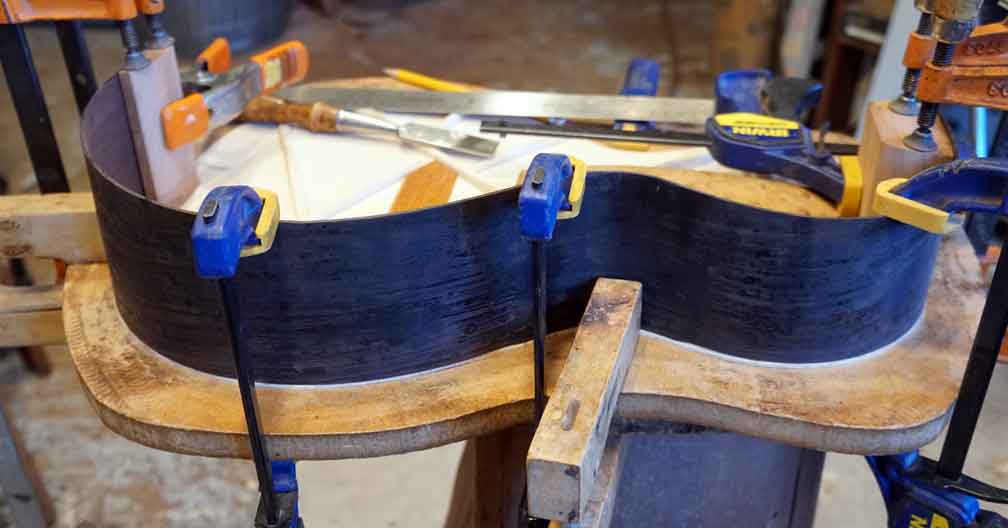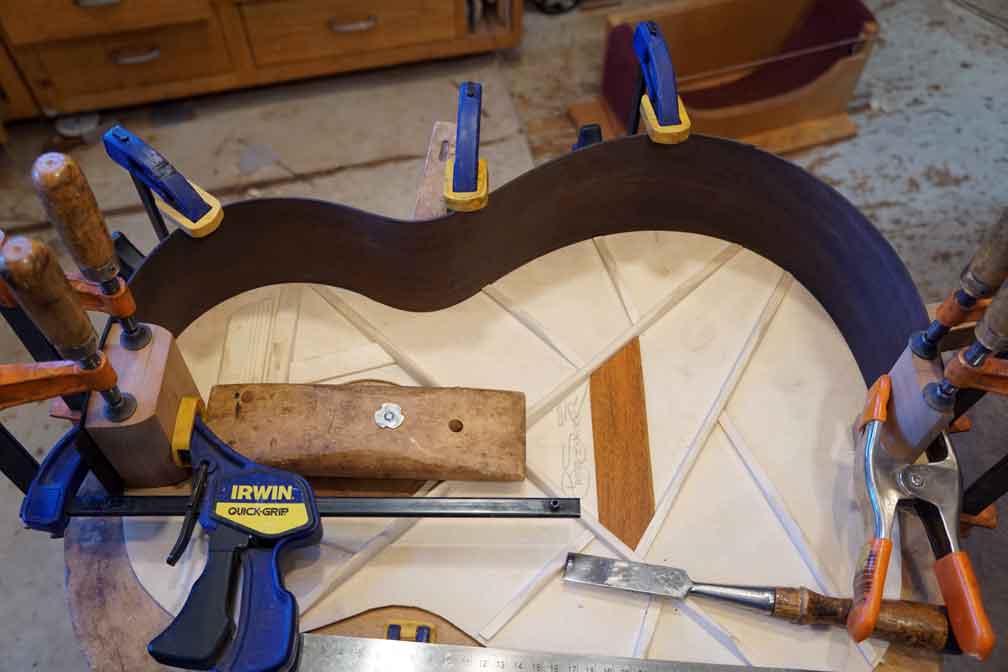I hosted my for thread here in OLF a couple of weeks ago. In fact, it was my first time participating here, though I have been a member for some time. I am currently rated "Mahogany", and you may not know of me, but I have been building professionally for over 50 years, my entire adult life! I am pretty set in my ways, so I may seem to be a bit "confident" (sometimes mistaken for arrogant) but as you get to know me I expect you will find me a gentleman. I am posting this build thread in the spirit of sharing a lifetime of experience in the hope that some among you will find my stye and knowledge useful.
The previous guitar was unique in my history of 650 instruments including at least 297 acoustic guitars. Actually, they all are, but this one was more so as it was a new template, non-dirivitive, and from materials new to me. The subject of this thread will be based on the previous guitar, which I called a "Couch Noodler", partly just because I am too clever by half, and partly because I really do expect it will be a terrific guitar for relaxing on the sofa or whatever.
This one will be European (Polish) Spruce over Brazilian Rosewood, materials very familiar to me. The string length is 25 11/32", also very familiar to me. At 14 1/4", the lower bout is 00sh, and the upper bout is narrow for me, at 10". The body depth will be less than Martin folks would expect, and it will be slightly wedged, maybe 3/16".
I do not use any templates for laying out my bracing. I am more interested in growth than I am in repeatability, so I allow each guitar the possibility of an incrementally smarter layout. Of course that leaves them open to the possibility of the opposite, but so far, so good. Using aesthetics to control the layout can be viewed as giving the subconscious access to the hands.
